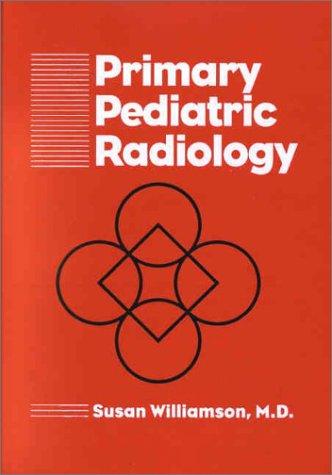The formula for writing an exceptionally good radiology book is pretty straightforward:
- Well-organized chapters based on cardinal clinical scenarios
- Specific recommendations with regard to when and whom to image (or not to image!)
- Excellent images and annotations
Primary Pediatric Radiology, by Susan Williamson, M.D., delivers on all of these points. It is a clinically oriented book, with chapters that are organized on the basis of cardinal clinical scenario (relevant to various organ systems). Examples are:
- The Neonate or Young Infant with Vomiting (page 53)
- The Older Infant and Child with Guaiac-Positive or Frankly Bloody Stools (page 171)
- The Limping Toddler (page 189)
- The Child with Seizures and Abnormal Neurologic Signs and Symptoms (page 225).
The book is packed with clearly worded and critically important clinical recommendations and pearls. For example, in a discussion about neonates and young infants with vomiting, Dr. Williams writes:
All babies spit up or vomit at times. When there is associated apnea, wheezing, desaturation or weight loss, an imaging investigation should be obtained…. Clinically, the color of the vomitus is import. For example, bilious (greenish yellow) vomiting is an ominous sign…. The definitive examination should be a barium upper gastrointestinal examination to exclude midgut volvulus (page 53).

Although published in 2002, Primary Pediatric Radiology is still very close to contemporary best practices. For example, with regard to the diagnosis of acute appendicitis, Dr. Williams writes:
The diagnosis of appendicitis is usually a clinical one. When radiographs are performed, however, the SBO pattern may be present…. When the diagnosis is in doubt and the plan films are not helpful, ultrasound is the modality of choice to visualize the appendix (emphasis supplied). The findings in appendicitis on ultrasound are those of a sausage-shaped mass in the right lower quadrant that is non compressible with the ultrasound transducer (pages 156-7).
(Compare this with some contemporary radiology books which still suggest, incorrectly, that CT with contrast should be the imaging modality of first choice in children!)
I recommend Primary Pediatric Radiology to anyone who provides medical care to the pediatric population, and to anyone interested in pediatric radiology. It is written at the resident level, but I think it would be an extremely useful read to attendings and to ambitious medical students as well.
It is, in my opinion, one of the best medical books of all time!


Leave a Reply